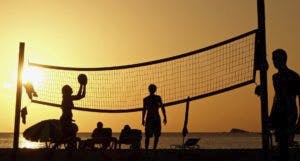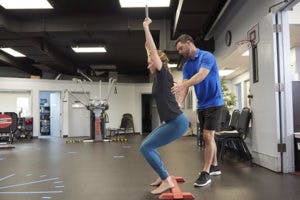
There will always be times when you must take a break from your exercise routine. For many, the closure of gyms and cancellation of exercise classes during the COVID-19 pandemic has meant little ability to exercise in their normal routine. Some of you may have started walking or cycling outdoors recently and are interested in continuing and building on that. Here are some tips to gradually return to or start an exercise program – post Stay At Home orders.
- As always, if you have any injuries or health conditions, are new to exercise, or haven’t seen your primary healthcare provider in recent years, a quick check-up and go-ahead from a medical professional is always a good idea. Many people ignore this step, but it’s extremely important. I’ve seen runners collapsed in cardiac arrest, joggers overcome by heat exhaustion nearly unconscious, and cyclists or swimmers blacking out during their workout. These people all thought they were healthy but were in very real danger of losing their lives.
- START SLOWLY, START SLOWLY, START SLOWLY! You won’t be at the same fitness and ability level anymore. It doesn’t matter what you used to do; your body is different now. What does start slowly mean? If you normally spent an hour exercising (even in a class) cut that time in half. Don’t push yourself to your limit. In weightlifting, decrease your resistance and reps by half and work yourself back up gradually. For endurance exercise, decrease your distance and intensity adding only 10% each workout. During a fitness class, slack off for the second half of the hour or even step out to rest and stretch.
- Overuse injuries are your enemy. Avoid them! Your tendons and ligaments are no longer adapted to the forces you used to put on them. Whether it’s playing tennis or getting back to martial arts, your connective tissue needs a couple of weeks to re-build and return to its previous level of elasticity and load tolerance. Now is not the time to snap your achilles.
- Respect the messages from your body. If you feel overly fatigued or sick, don’t exercise or cut your workout short. Especially during the pandemic, pay attention to feelings of fever, cough, and unusual shortness of breath.
- Now may be a good time to seek instruction or coaching in your favorite sport or activity. Certified trainers and sports physical therapists can help you improve your weightlifting form, analyze your running gait, and teach you how to stretch correctly.

- If you wear a mask while exercising, rest if you feel light-headed. Don’t forget to stay hydrated. Signs of overheating include headache, dizziness, nausea, faintness, cramps, or palpitations.
- If you notice an ache or pain that doesn’t go away with rest for a day or two, seek medical attention from your MD or Physical Therapist. Treating an injury in the earliest stages results in the best outcomes and less time required for full healing.
At OrthoSport Hawaii, we offer a variety of services to help you return to your favorite sport or start a new exercise program. Our certified personal trainers and PTs are available to help you avoid or recover from injury and optimize your performance. Check out our RunFit running analysis program and our SportFit package for athletes looking to stay active in their favorite sport into their older years. For information on our personal training, physical therapy, and massage therapy services, call 808.373.3555.
